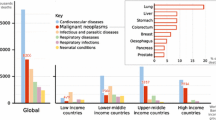Abstract
In order to accomplish the transition from avascular to vascular growth, solid tumours secrete a diffusible substance known as tumour angiogenesis factor (TAF) into the surrounding tissue. Endothelial cells which form the lining of neighbouring blood vessels respond to this chemotactic stimulus in a well-ordered sequence of events comprising, at minimum, of a degradation of their basement membrane, migration and proliferation. Capillary sprouts are formed which migrate towards the tumour eventually penetrating it and permitting vascular growth to take place. It is during this stage of growth that the insidious process of invasion of surrounding tissues can and does take place. A model mechanism for angiogenesis is presented which includes the diffusion of the TAF into the surrounding host tissue and the response of the endothelial cells to the chemotactic stimulus. Numerical simulations of the model are shown to compare very well with experimental observations. The subsequent vascular growth of the tumour is discussed with regard to a classical reaction-diffusion pre-pattern model.
Similar content being viewed by others
References
Ausprunk, D.H. and J. Folkman (1977). Migration and proliferation of endothelial cells in preformed and newly formed blood vessels during tumour angiogenesis. Microvasc. Res. 14: 53–65.
Chaplain, M.A.J. and B.D. Sleeman (1990). A mathematical model for the production and secretion of tumour angiogenesis factor in tumours. IMA J. Math. Appl. Med. Biol. 7: 93–108.
Chaplain, M.A.J. and A.M. Stuart (1991). A mathematical model for the diffusion of tumour angiogenesis factor into the surrounding host tissue. IMA J. Math. Appl. Med. Biol. 8: 191–220.
Chaplain, M.A.J. and A.M. Stuart (1993). A model mechanism for the chemotactic response of endothelial cells to tumour angiogenesis factor. IMA J. Math. Appl. Med. Biol. 10: 149–163.
Chaplain, M.A.J. and N.F. Britton (1993). On the concentration profile of a growth inhibitory factor in multicell spheroids. Math. Biosci 115: 233–245.
Chaplain, M.A.J., D.L. Benson and P.K. Maini (1994). Nonlinear diffusion of a growth inhibitory factor in multicell spheroids. Math. Biosci. 121: 1–13.
Chen, T.C., D.R. Hinton, M.L.J. Apuzzo and F.M. Hofman (1993). Differential effects of tumor-necrosis-factor-alpha on proliferation, cell-surface antigen expression and cytokine interactions in malignant gliomas. Neurosurgery 32: 85–94.
Dillon, R., P.K. Maini and H.G. Othmer (1994). Pattern formation in generalized Turing systems. I. Steady-state patterns in systems with mixed boundary conditions. J. Math. Biol.
Durand, R.E. (1990). Multicell spheroids as a model for cell kinetic studies. Cell Tissue Kinet. 23: 141–159.
Folkman, J. (1976). The vascularization of tumors. Sci. Am. 234: 58–73.
Folkman, J. and M. Klagsbrun (1987). Angiogenic factors. Science 235: 442–447.
Gimbrone, M.A., R.S. Cotran, S.B. Leapman and J. Folkman (1974). Tumor growth and neovascularization: An experimental model using the rabbit cornea. J. Natn. Cancer Inst. 52: 413–427.
Harel, L., G. Chatelain and A. Golde (1984). Density-dependent inhibition of growth: inhibitory diffusible factors from 3T3- and Rous sarcoma virus (RSV)-transformed 3T3 cells. J. Cell Physiology 119: 101–106.
Hunding, A. (1980). Dissipative structures in reaction-diffusion systems: numerical determination of bifurcations in the sphere. J. Chem. Phys. 72: 5241–5248.
Hunding, A. (1983). Bifurcations of nonlinear reaction-diffusion systems in prolate spheroids. J. Math. Biol. 17: 223–239.
Hunding, A. (1984). Bifurcations of nonlinear reaction-diffusion systems in oblate spheroids. J. Math. Biol. 19: 249–263.
Iverson, O.H. (1991). The hunt for endogenous growth-inhibitory and or tumor suppression factors —their role in physiological and pathological growth-regulation. Adv. Cancer Res. 57: 413–453.
Kawase, E., H. Yamamoto, K. Hashimoto and N. Nakatsuji (1994). Tumor-necrosis-factor-alpha (TNF-alpha) stimulates proliferation of mouse primordial germ-cells in culture. Develop. Biol. 161: 91–95.
Keski-Oja, J., A.E. Postlethwaite and H.L. Moses (1988). Transforming growth factors and the regulation of malignant cell growth and invasion. Cancer Invest. 6: 705–724.
Michelson, S. and J. Leith (1991). Autocrine and paracrine growth factors in tumour growth: a methematical model. Bull. Math. Biol. 53: 639–656.
Murray, J.D. (1982). Parameter space for Turing instability in reaction diffusion mechanisms: a comparison of models. J. theor. Biol. 98: 143–163.
Muthukkaruppan, V.R., L. Kubai and R. Auerbach (1982). Tumor-induced neovascularization in the mouse eye. J. Natn. Cancer Inst. 69: 699–705.
Parkinson, K. and A. Balmain (1990). Chalones revisited—a possible role for transforming growth-factor-beta in tumor promotion. Carcinogenesis 11: 195–198.
Paweletz, N. and M. Knierim (1990). Tumor-related angiogenesis. Crit. Rev. Oncol. Hematol. 9: 197–242.
Sherratt, J.A. and J.D. Murray (1990). Models of epidermal wound healing. Proc. R. Soc. Lond. B 241: 29–36.
Sholley, M.M., G.P. Ferguson, H.R. Seibel, J.L. Montour and J.D. Wilson (1984). Mechanisms of neovascularization. Vascular sprouting can occur without proliferation of endothelial cells. Lab. Invest. 51: 624–634.
Stokes, C.L. and D.A. Lauffenburger (1991). Analysis of the roles of microvessel endothelial cell random motility and chemotaxis in angiogenesis. J. theor. Biol. 152: 377–403.
Sutherland, R.M. (1988). Cell and environment interactions in tumor microregions: the multicell spheroid model. Science 240: 177–184.
Wibe, E., T. Lindmo and O. Kaalhus (1981). Cell kinetic characteristics in different parts of multicellular spheroids of human origin. Cell Tissue Kinet. 14: 639–651.
Wu, S., C.M. Boyer, R.S. Whitaker, A. Berchuck, J.R. Wiener, J.B. Wienberg and R.C. Bast (1993). Tumor-necrosis-factor-alpha as an autocrine and paracrine growth-factor for ovarian cancer monokine induction of tumor-cell proliferation and tumor-necrosis-factor-alpha expression. Cancer Res. 53: 1939–1944.
Author information
Authors and Affiliations
Rights and permissions
About this article
Cite this article
Chaplain, M.A.J. The mathematical modelling of tumour angiogenesis and invasion. Acta Biotheor 43, 387–402 (1995). https://doi.org/10.1007/BF00713561
Issue Date:
DOI: https://doi.org/10.1007/BF00713561




